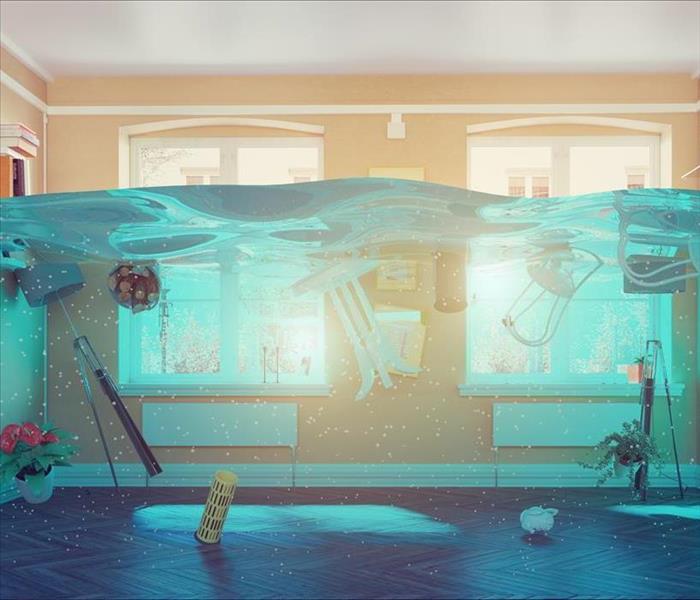Dealing With the Aftermath of Water Damage
4/30/2021 (Permalink)
The aftermath of water damage on a residential property can be devastating for unsuspecting homeowners. It is easy to look at a flooded living area and feel like all is lost, but fear not, the damage is not typically as bad as it seems. However, as with any natural or manmade disaster, you need to take action to limit the loss. Every homeowner should take three steps to protect their property after a water problem.
3 Steps To Deal With The Aftermath Of Water Damage
1. Mitigate Further Damage
Whether the damage is the result of an exterior flood or broken pipes, you should try to limit as much damage as possible. In fact, many insurers require homeowners to take mitigative action to prevent further loss. You can turn off the water supply to your home or the affected area, put out buckets for a leaky roof, or call for assistance.
2. Contact Your Insurer and a Mitigation Specialist
When water damage occurs, your first phone call should be to your insurance company, notifying them of the problem. The insurer will typically schedule a time for an insurance adjuster to come out and assess the property.
Beyond the insurance company, contact a water restoration service in Salt Lake City, UT, for an emergency assessment. The company will send out a crew to inspect the property and offer any mitigation services to limit damage to your house.
3. Document the Loss
Before the restoration service gets too far along in the water cleanup process, you should take pictures of the damage. Most insurance companies will want homeowners to create a statement of loss and having photographs to prove damage help speed up the claims process.
No homeowner wants to deal with water damage, but if you have to, it pays to know how. The three steps above are not exhaustive. For more extensive information, you might consider contacting your insurance representative or a water restoration specialist.





 24/7 Emergency Service
24/7 Emergency Service
